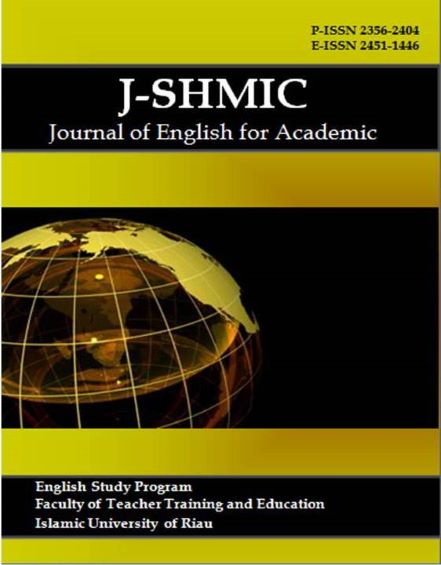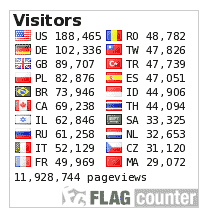Evaluation of Software Tell Me More for Teaching English : Technology Acceptance Model Approach
Keywords:
Technology Acceptance Model, Tell Me More, Teaching EnglishAbstract
Knowing the students’ technology acceptance about the use of learning media is important because it can measure how far the media’s utilisation is.The research purpose is to recognize the significant influence between the variable of Technology Acceptance Model, such as perceived usefulness, perceived ease of use, attitude towards use and behaviour intention in accepting software Tell Me More for teaching English. The participants of this research consisted of 51 students of English Education Study Program from Universitas Muhammadiyah Metro. Questionnaire was used to find out the students’ acceptance towards the use of software Tell Me More. Regression analysis is applied to analyze the data. Based on the data analysis through the questionnaire, it is revealed that there was significant influence between the variable of technology acceptance model towards the students’ acceptance of Tell Me More software.
Downloads
References
Al-Adwan, Amer., Al-Adwan, Ahmad., and Smedley Jo. (2013). Exploring Students Acceptance of E-Learning Using Technology Acceptance Model in Jordanian University. International Journal of Education and Development Using Information and Communication Technology (IJEDICT). Vol 13, 4- 18
Bugembe, Juliet. 2010. Perceived Usefulness, Perceived Ease of Use, Attitude and Actual Usage of a New Financial Management System: A Case Study of Uganda National Examination Abroad. Uganda: Makarere University Business School
Bertrand, Manon and Bouchard, Stephane. 2008. Applying The Technology Acceptance to VR With People Who Are Favorable to Its Use. Journal of Cyber Therapy and Rehabilitation. Vol. 1. Issue 2
Carmen et al. (2003). Use of ICT and Perception of E-Learning Among University Students: A Differential Perspective According to Gender and Degree Year Grop. Interactive Educational Multimedia. No. 7
Creszenci,A. 2005. User Acceptance of Electronic Meeting Technology in The Semiconductor Research Corporation. Chapel Hill: North Carolina University
Davis, F.D. 1989. Perceived Usefulness, Peceived Ease of Use and User Acceptance of Information Technology. MIS Quarterly. 13
Davis, F.D., Bagozzi, R.P and Warshaw, P.R. (1989). User Acceptance of Computer Technology: A Comparison of Two Theoretical Models. Management Science. 35(8)
Ishak,WI and Shafinah,M.S. 2006. Utilizing ESL Websites as Learning Tool to Learn English. Online Teaching and Learning in ELT. Penang: Penerbit USM
Priyanka, S dan Kumar, A. (2013). Understanding The Evolution of Technology Acceptance Model. International Journal of Advance Research in Computer Science and Management Studies. 1(6)
Sabti, Ahmed Abdulateef., and Chaichan, Rasha Sami. 2014. Saudi High School Students’ Attitudes and Barriers Toward The Use of Computer Technologies In Learning English. Springer Plus. 3:460
Shroff, Ronnie H., Deneen, Christoper C., and Ng Eugenia M.W. (2011). Analysis of The Technology Acceptance Model in Examining Students’ Behavioural Intention to Use an E-Portofolio System. Australian Journl of Educational Technology. 27(4)
Tanduklangi, Amri. (2017). Determinants of User Intention in Using E-Learning Technology in Indonesian Context: An Empirical Study. Mediterranean Journal of Social Sciences. 8(3).
Venkatesh, Viswanath. (2000). Determinants of Perceived Ease of Use: Integrating Control, Motivation, and Emotion into The Technology Acceptance Model. Information System Research.11(4)
Yunus, Melor Md., Hashim, Arwati, Embi Mohamed A., and Lubis, Maimun A. (2010). The Utilization of ICT in The Teaching and Learning of English: ‘Tell Me More’. Procedia Social and Behavioral Science. 9
Zanzani, Farnaz Vali Moghaddan., and Ramazani Morteza. 2012. Investigation of E-Learning Acceptance in Teaching English Language Based on TAM Model. ARPN Journal of Systems and Software. Vol 2, No. 11
Published
How to Cite
Issue
Section
This is an open-access article distributed under the terms of the Creative Commons Attribution-ShareAlike 4.0 International License which permits unrestricted use, distribution, and reproduction in any medium. Users are allowed to read, download, copy, distribute, search, or link to full-text articles in this journal without asking by giving appropriate credit, providing a link to the license, and indicating if changes were made. All of the remixes, transform, or build upon the material must distribute the contributions under the same license as the original.











